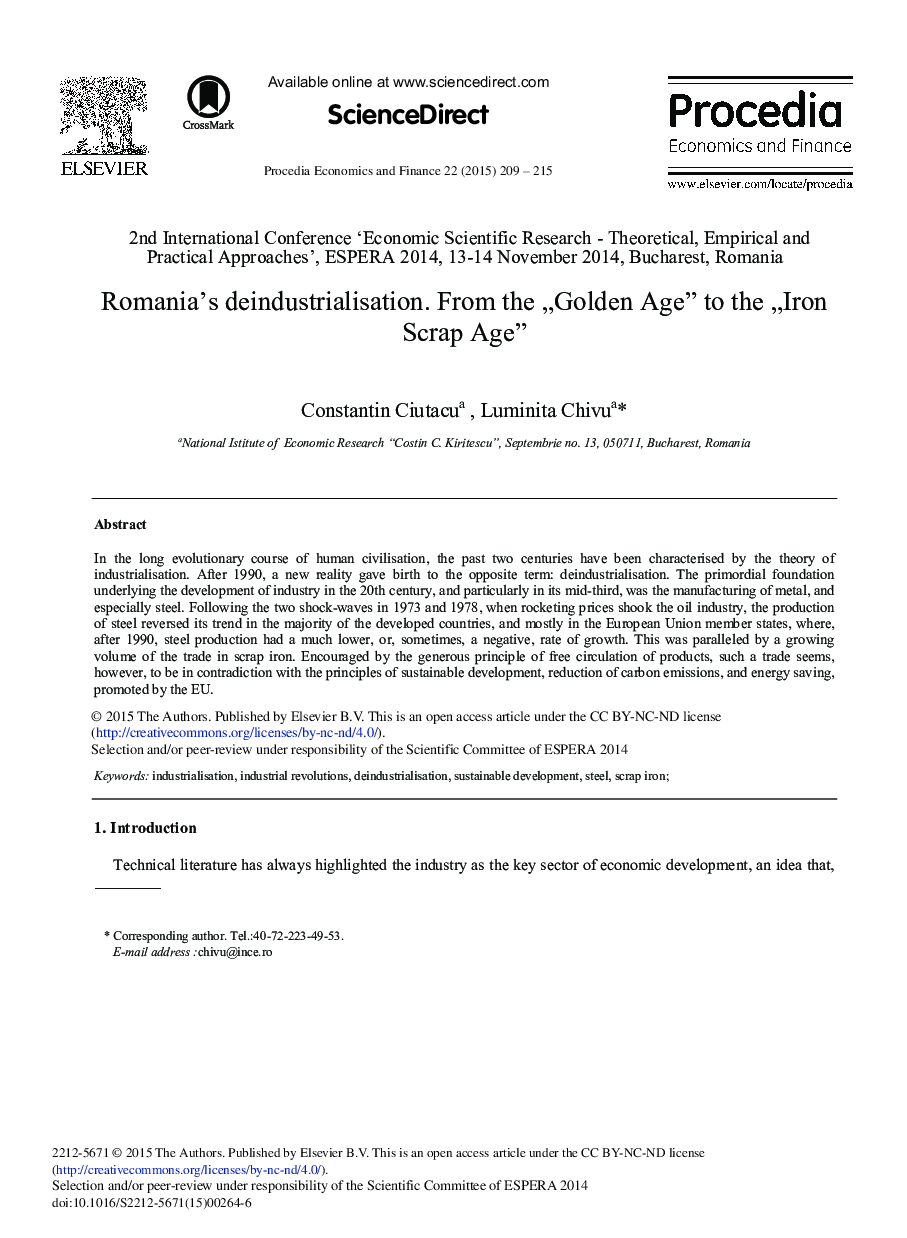| کد مقاله | کد نشریه | سال انتشار | مقاله انگلیسی | نسخه تمام متن |
|---|---|---|---|---|
| 979965 | 1480379 | 2015 | 7 صفحه PDF | دانلود رایگان |

In the long evolutionary course of human civilisation, the past two centuries have been characterised by the theory of industrialisation. After 1990, a new reality gave birth to the opposite term: deindustrialisation. The primordial foundation underlying the development of industry in the 20th century, and particularly in its mid-third, was the manufacturing of metal, and especially steel. Following the two shock-waves in 1973 and 1978, when rocketing prices shook the oil industry, the production of steel reversed its trend in the majority of the developed countries, and mostly in the European Union member states, where, after 1990, steel production had a much lower, or, sometimes, a negative, rate of growth. This was paralleled by a growing volume of the trade in scrap iron. Encouraged by the generous principle of free circulation of products, such a trade seems, however, to be in contradiction with the principles of sustainable development, reduction of carbon emissions, and energy saving, promoted by the EU.
Journal: Procedia Economics and Finance - Volume 22, 2015, Pages 209-215